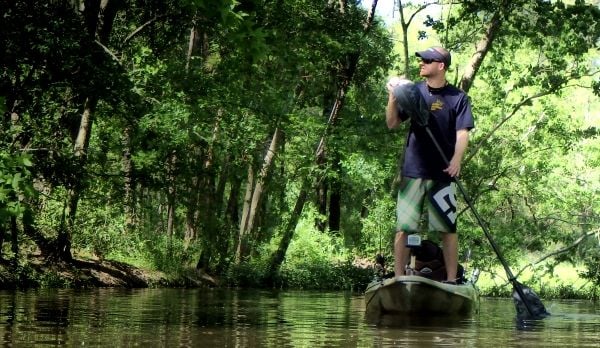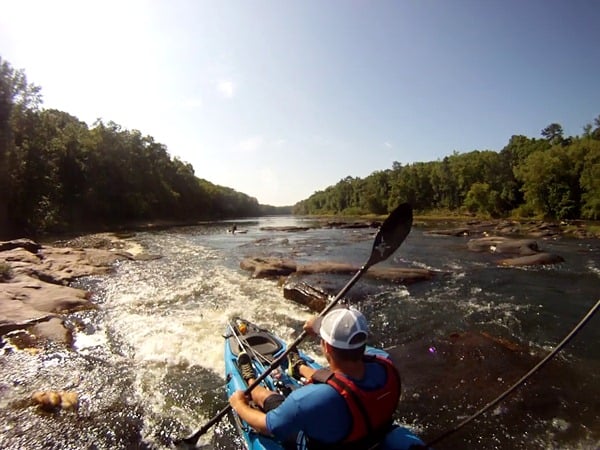
Image Caption: The fate of the blue catfish and more than 60 other species of large-river specialist fishes depends on conservation of suitable habitat and connectivity between the Mississippi River and its tributaries. Credit: Brenda Pracheil
University of Wisconsin-Madison
Large-river specialist fishes — from giant species like paddlefish and blue catfish, to tiny crystal darters and silver chub — are in danger, but researchers say there is greater hope to save them if major tributaries identified in a University of Wisconsin-Madison study become a focus of conservation efforts.
The study says 60 out of 68 U.S. species, or 88 percent of fish species found exclusively in large-river ecosystems like the Mississippi, Missouri and Ohio rivers, are of state, federal or international conservation concern. The report is in the April issue of the journal Frontiers in Ecology and the Environment.
On the other hand, says lead author Brenda Pracheil, a postdoctoral researcher in the UW’s Center for Limnology, the study offers some good news, too.
Traditionally, the conservation emphasis has been on restoring original habitat. This task proves impossible for ecosystems like the main trunk of the Mississippi River — the nation’s shipping, power production, and flood control backbone. While the locks, dams and levees that make the Mississippi a mighty economic force have destroyed fish habitat by blocking off migration pathways and changing annual flood cycles species need to spawn, removing them is not a realistic conservation option.
But, says Pracheil, we’re underestimating the importance of tributaries. Her study found that, for large-river specialist fish, it’s not all or nothing. Some rivers are just big enough to be a haven.
For any river in the Mississippi Basin with a flow rate of less than 166 cubic meters of water per second, virtually no large-river specialist fishes are present. But in any river that even slightly exceeds that rate, 80 percent or more of the large-river species call it home.
That means Mississippi tributaries about the size of the Wisconsin River and larger are providing crucial habitat for large-river fishes. When coupled with current efforts in the large rivers themselves, these rivers may present important opportunities for saving species.
“Talk to any large-river fish biologist, and they will tell you how important tributaries are to big river fish,” says Pracheil. “But, until now, we’ve not really understood which rivers are most important. Our study tackles that and shows which tributaries in the Mississippi River Basin show the most promise for conservation of large-river fishes.”
Current policies governing large river restoration projects are funded largely through the U.S. Army Corps of Engineers, which requires that funds be spent on mainstems — or the big rivers themselves. Pracheil’s study suggests spending some of that money on tributary restoration projects might do more conservation good for fish, while also letting agencies get more bang for their habitat restoration buck.
“Tributaries may be one of our last chances to preserve large-river fish habitat,” Pracheil says. “Even though the dam building era is all but over in this country, it’s just starting on rivers like the Mekong and Amazon — places that are hotspots for freshwater fish diversity. While tributaries cannot offer a one-to-one replacement of main river habitats, our work suggests that [they] provide important refuges for large-river fishes and that both main rivers and their tributaries should be considered in conservation plans.”
—
On The Net:
Source: University of Wisconsin-Madison Via Redorbit







 Kingfish (Seriola lalandi lalandi) are New Zealand’s most accessible gamefish, offering size, power and guile to challenge Kiwi anglers fishing from the shore and from boats.
Kingfish (Seriola lalandi lalandi) are New Zealand’s most accessible gamefish, offering size, power and guile to challenge Kiwi anglers fishing from the shore and from boats.



















